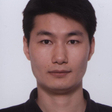Source Separation and Higher-Order Causal Analysis of MEG and EEG
PDF WebSeparation of the sources and analysis of their connectivity have been an important topic in EEG/MEG analysis. To solve this problem in an automatic manner, we propose a twolayer model, in which the sources are conditionally uncorrelated from each other, but not independent; the dependence is caused by the causality in their time-varying variances (envelopes). The model is identified in two steps. We first propose a new source separation technique which takes into account the autocorrelations (which may be time-varying) and time-varying variances of the sources. The causality in the envelopes is then discovered by exploiting a special kind of multivariate GARCH (generalized autoregressive conditional heteroscedasticity) model. The resulting causal diagram gives the effective connectivity between the separated sources; in our experimental results on MEG data, sources with similar functions are grouped together, with negative influences between groups, and the groups are connected via some interesting sources.
| Author(s): | Zhang, K. and Hyvärinen, A. |
| Links: | |
| Journal: | Uncertainty in Artificial Intelligence: Proceedings of the Twenty-Sixth Conference (UAI 2010) |
| Pages: | 709-716 |
| Year: | 2010 |
| Month: | July |
| Day: | 0 |
| Editors: | Gr{\"u}nwald, P. , P. Spirtes |
| Publisher: | AUAI Press |
| Bibtex Type: | Conference Paper (inproceedings) |
| Address: | Corvallis, OR, USA |
| Event Name: | 26th Conference on Uncertainty in Artificial Intelligence (UAI 2010) |
| Event Place: | Catalina Island, CA, USA |
| Digital: | 0 |
| Electronic Archiving: | grant_archive |
| ISBN: | 978-0-9749039-6-5 |
| Language: | en |
| Organization: | Max-Planck-Gesellschaft |
| School: | Biologische Kybernetik |
BibTex
@inproceedings{6630,
title = {Source Separation and Higher-Order Causal Analysis of MEG and EEG},
journal = {Uncertainty in Artificial Intelligence: Proceedings of the Twenty-Sixth Conference (UAI 2010)},
abstract = {Separation of the sources and analysis of their connectivity have been an important topic in EEG/MEG analysis. To solve this problem in an automatic manner, we propose a twolayer model, in which the sources are conditionally uncorrelated from each other, but not independent; the dependence is caused by the causality in their time-varying variances (envelopes). The model is identified in two steps. We first propose a new source
separation technique which takes into account the autocorrelations (which may be time-varying) and time-varying variances of the sources. The causality in the envelopes is then discovered by exploiting a special
kind of multivariate GARCH (generalized autoregressive
conditional heteroscedasticity) model. The resulting causal diagram gives the effective connectivity between the separated sources; in our experimental results on MEG data, sources with similar functions are grouped together, with negative influences between groups, and the groups are
connected via some interesting sources.},
pages = {709-716},
editors = {Gr{\"u}nwald, P. , P. Spirtes},
publisher = {AUAI Press},
organization = {Max-Planck-Gesellschaft},
school = {Biologische Kybernetik},
address = {Corvallis, OR, USA},
month = jul,
year = {2010},
slug = {6630},
author = {Zhang, K. and Hyv{\"a}rinen, A.},
month_numeric = {7}
}
